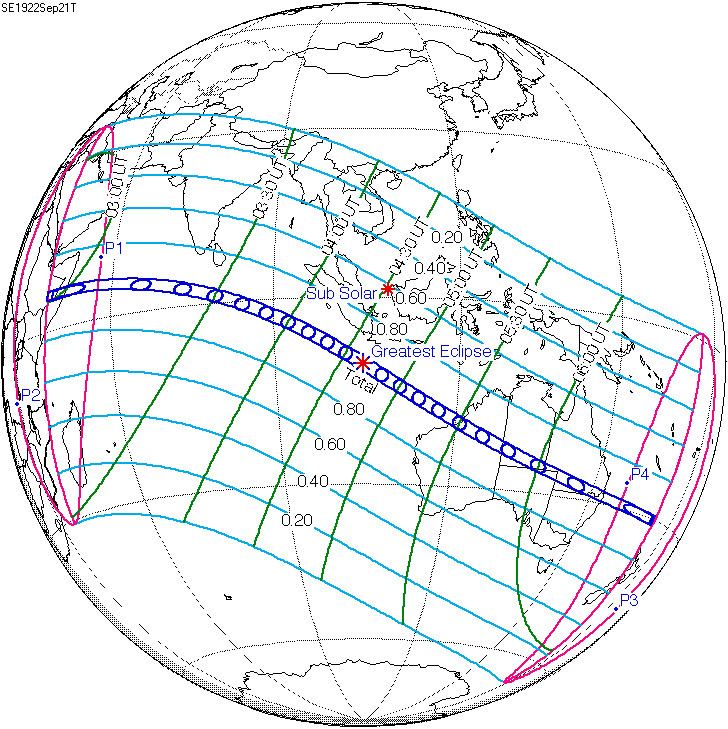Nature Total Magnitude 1.0678 Max. width of band 226 km (140 mi) Start date September 21, 1922 | Gamma -0.213 Duration 359 sec (5 m 59 s) Greatest eclipse 4:40:31 | |
 | ||
A total solar eclipse occurred on September 21, 1922. A solar eclipse occurs when the Moon passes between Earth and the Sun, thereby totally or partly obscuring the image of the Sun for a viewer on Earth. A total solar eclipse occurs when the Moon's apparent diameter is larger than the Sun's, blocking all direct sunlight, turning day into darkness. Totality occurs in a narrow path across Earth's surface, with the partial solar eclipse visible over a surrounding region thousands of kilometres wide.
Contents
This eclipse started in Africa and covered the whole Indian Ocean and Australia. Two large scientific expeditions investigated Einstein's theory of relativity.
Solar eclipses 1921-1924
Each member in a semester series of solar eclipses repeats approximately every 177 days and 4 hours (a semester) at alternating nodes of the Moon's orbit.
Saros 133
Solar Saros 133, repeating every 18 years, 11 days, contains 72 events. The series started with a partial solar eclipse on July 13, 1219. It contains annular eclipses from November 20, 1435, through January 13, 1526, with a hybrid eclipse on January 24, 1544. It has total eclipses from February 3, 1562, through June 21, 2373. The series ends at member 72 as a partial eclipse on September 5, 2499. The longest duration of totality was 6 minutes, 50 seconds on August 7, 1850. The total eclipses of this saros series are getting shorter and farther south with each iteration.
